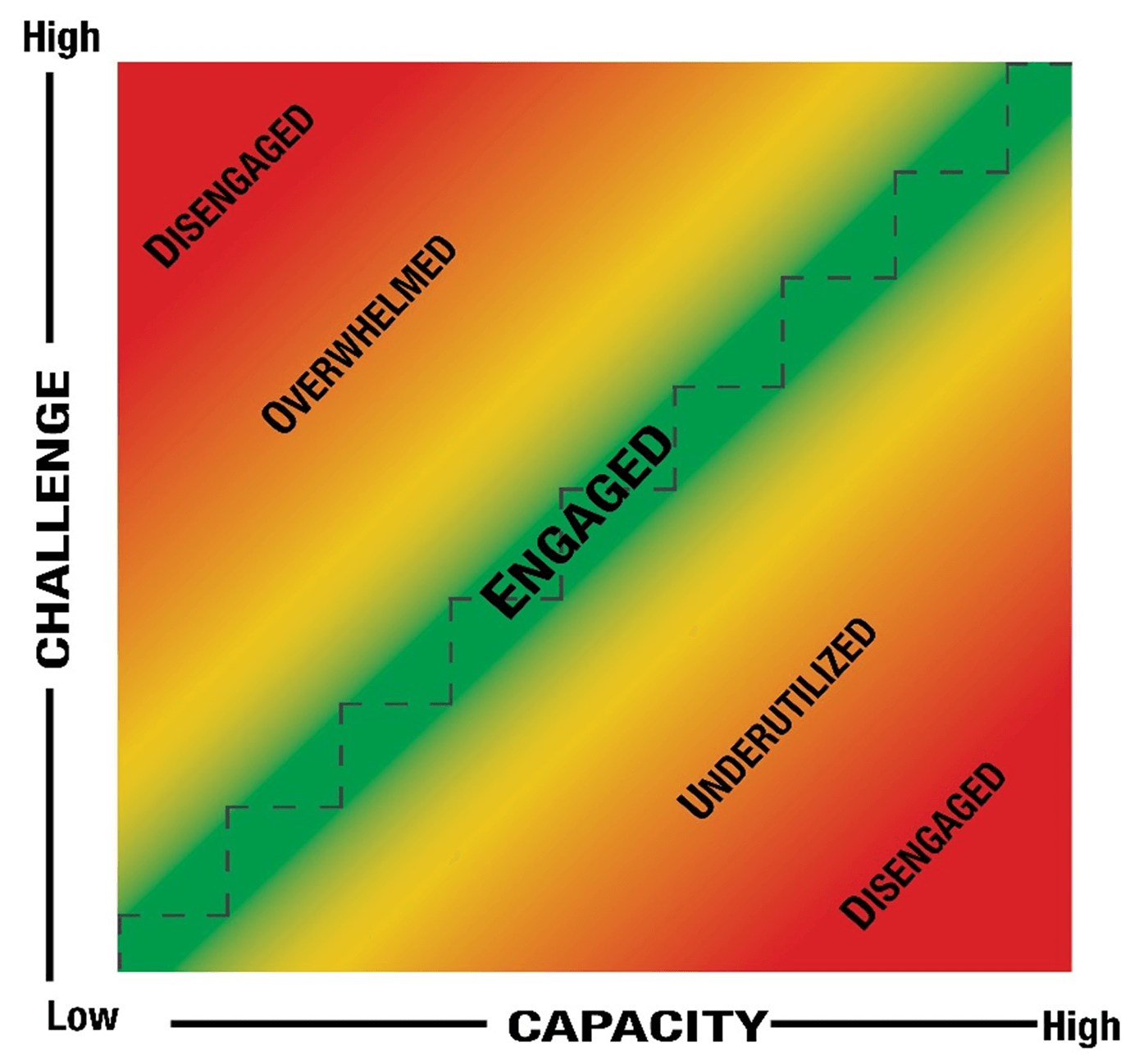Always leave time in your life to do something that makes you happy, satisfied, even joyous. That has more of an effect on economic well being than any other single factor.
Paul Hawker
The world of work is undergoing unprecedented change making it hard for many workers to keep up. Unfortunately, those that do not actively manage their careers may find themselves left behind. Yet, not all is lost … there are many strategies and approaches to helping workers build careers that are engaging and rewarding, inspiring them to feel positive about the future and the endless possibilities it can bring.
One concept that can help get workers thinking about work and life, and what is working and what isn’t is career engagement which is defined as “the emotional and cognitive connection to one’s career; it is a state where one is focused, energized, and able to derive pleasure from life’s activities” (Pickerell, 2013). In this context, career is considered quite broadly, encompassing paid and unpaid work, learning experiences, and various life roles across one’s lifespan.

Ⓒ 2011, Roberta Neault and Deirdre Pickerell
As shown in the image, career engagement is realized through the dynamic interaction of two components – challenge and capacity. When the level of challenge exceeds available capacity, individuals will move out of the zone of engagement (the green zone in middle), towards feeling overwhelmed and, without correction, they become actively disengaged. Similarly, when capacity exceeds the level of challenge, individuals move towards feeling underutilized and, without correction, they are actively disengaged. Whether via burnout (overwhelmed) or boredom (underutilized), the experience of disengagement is the same; individuals are unhappy, unproductive, and disconnected.
This model is similar to Csikszentmihalyi’s construct of “Flow,” but goes beyond his original work which looked at challenge and skill (i.e., individuals achieved flow when challenge and skill were balanced). Within career engagement, capacity is key as individuals are encouraged to look beyond their skills to consider things like resources, work and personal relationships, workload, wellbeing, and fit. Further, as the model is designed to be holistic, it acknowledges that responsibility for career engagement does not rest with the individual.
Instead, employers/organizations and even broader systems (e.g., communities and governments) are stakeholders. Encouraging individuals to consider all life roles, also acknowledges that roles outside of paid work can have a huge impact on one’s ability to be engaged. For example, everything can be great at work until a child becomes critically ill, a parent passes away, or a home is lost… these can’t help but impact life at work, even though work hasn’t changed.
To begin, individuals can reflect on whether – overall – they feel engaged (i.e., connected, energized, happy, focused) and, if not, whether they are more likely to feel overwhelmed or underutilized. Then, begin to focus on specific life roles, paying attention to whether it is the paid work role, or some other aspect of life (parent, child, volunteer, student) that seems to be having the biggest impact on opportunities to be engaged.